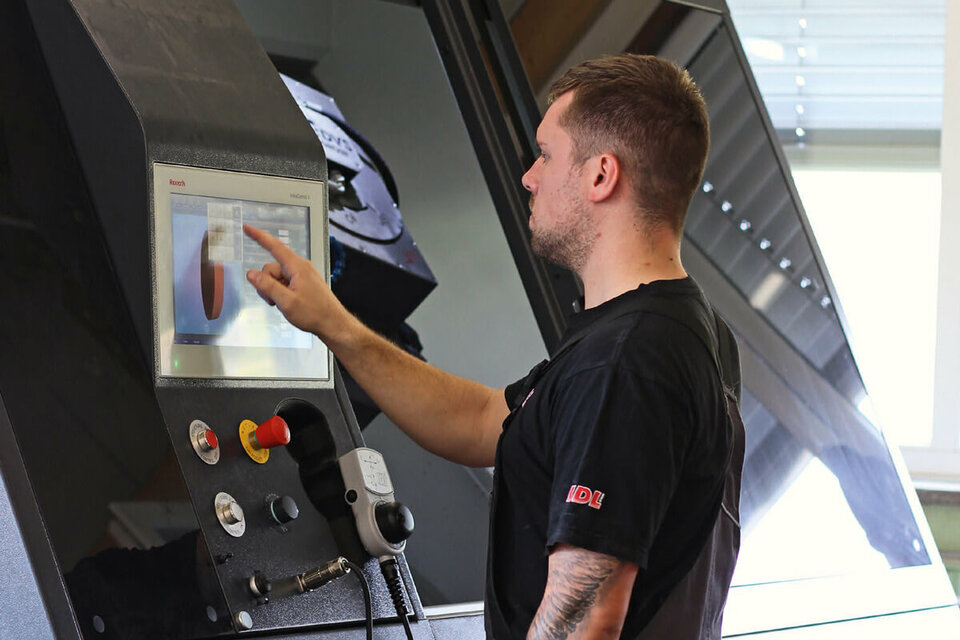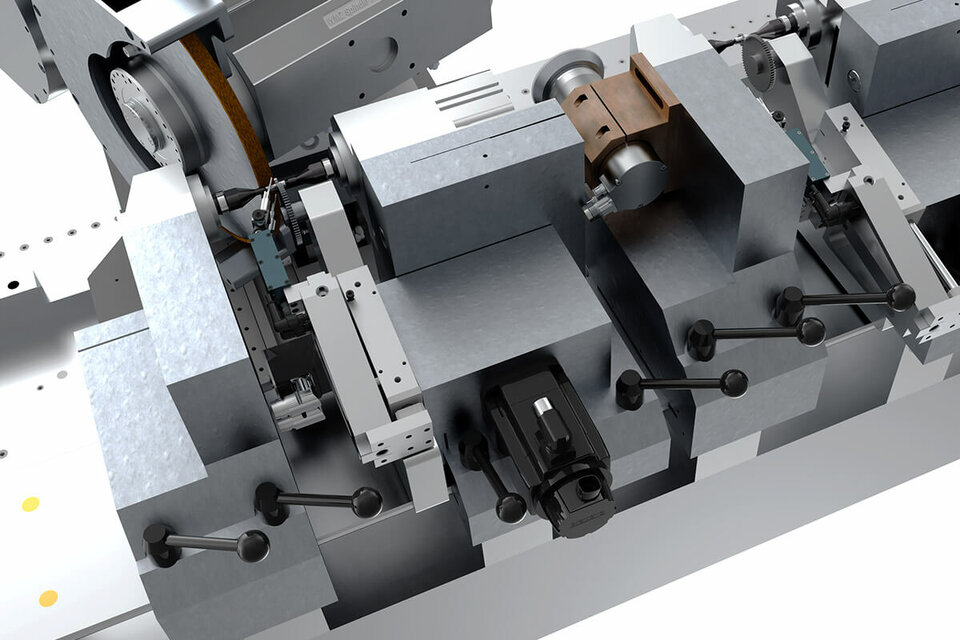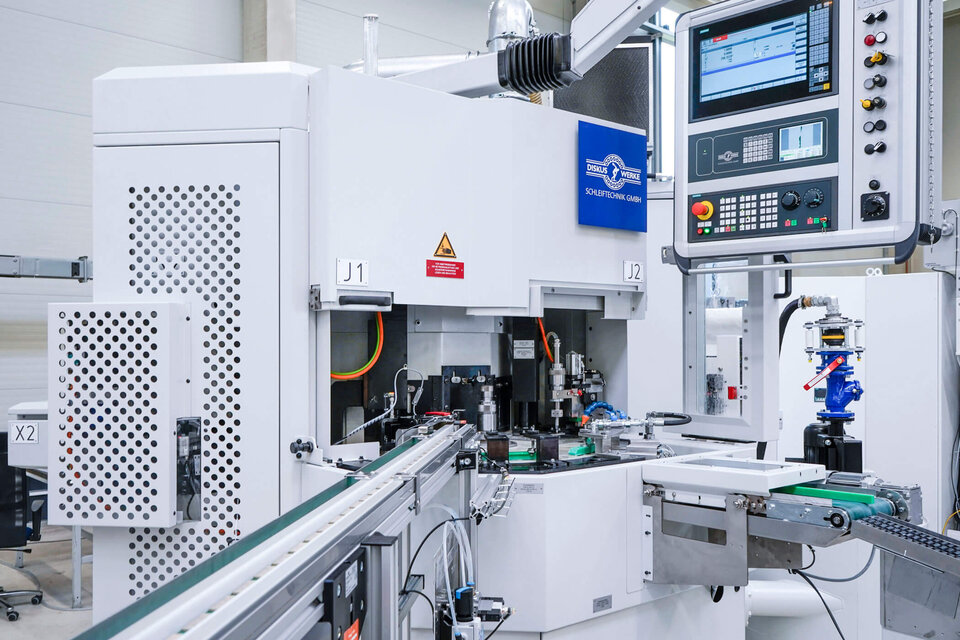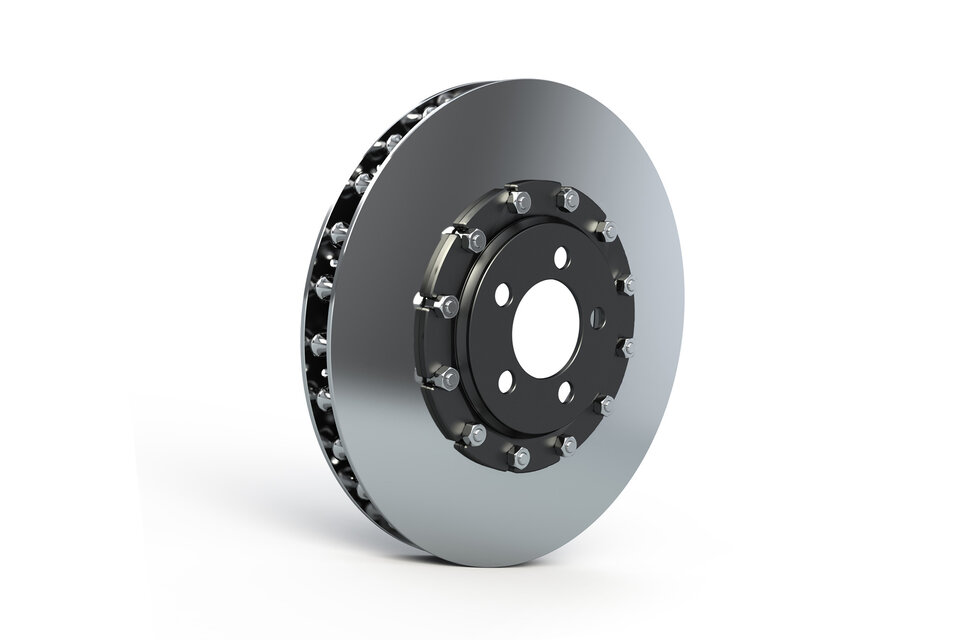Norman Speckert, plant manager at Albert Klopfer GmbH, in an interview about the possibilities of hard finishing with UGrind.
Albert Klopfer GmbH from Renningen near Stuttgart produces and sells clamping tools at the highest level. Now in its third generation, the company manufactures collets and cylinders, arbor presses, lathe chucks or centring points for customers around the globe. All products, from saw cuts to high-precision clamping tools, are manufactured in the company's own production facilities. Since Albert Klopfer specialises in special solutions, the variance of parts in production is correspondingly high. The company recently purchased a UGrind machine from DVS Universal Grinding GmbH for hard fine machining at the Mudau plant near Heidelberg. In an interview with DVS, plant manager Norman Speckert is enthusiastic about the new machine and the possibilities of hard fine turning.
Mr Speckert, how did you hear about DVS UGrind?
Speckert: "We were looking for a long time for a CNC machine with which our processes could be optimised. At the stand of the DVS TECHNOLOGY GROUP at the GrindTec trade fair in Augsburg, we became aware of the UGrind from DVS Universal Grinding GmbH. Above all, hard turning in combination with grinding processes made a good impression and made us confident that we would be able to achieve time savings in machining. The combination of hard turning and grinding in one machine for small to medium batch sizes was unknown to us before. Our goal was always to achieve the time saving and several operations in one clamping.
We liked the modern design of the machine very much. The design is compact, the coolant system is integrated into the machine and is not located externally elsewhere. Furthermore, the granite bed and the weight of 7 tons were important arguments for the machine. We were immediately impressed by this, because it ensures good rigidity and stability of the machine. At the moment we are in the learning phase, especially when it comes to the question when to turn and when to grind or how to combine the process. Often all that is needed now is hard turning".
What processing time do you achieve today compared to the past?
Speckert: "For machining with up to 7 operations, we can save 30% in time. We can save up to 70% time if we only turn and no longer grind. Unfortunately, this cannot be applied to every product. But as already mentioned, we try to combine here".
What accuracy do you achieve with the UGrind?
Speckert: "We have customer orders with maximum tolerances of 5 µm, flat surfaces often have to be accurate to within 3 µm. We achieve this easily. What fascinates me is that the 5 µm can also be achieved during turning. And that is with hardened workpieces with a hardness of HRC 55".
Which components are machined on the UGrind?
Speckert: "We mainly grind gear rings for Hirth gearings. These are mainly used for indexing the indexing table of rotary indexing tables in machine tools".
How often is the machine retooled?
Speckert: "At the moment we have lot sizes of around 100 pieces. We try to retool as seldom as possible. Set-up is much faster with the UGrind. We see this primarily with orders with small batch sizes, which are finished faster with the UGrind compared to the past.
How long does it take to program a completely new workpiece?
Speckert: "The machine is easy to program after a certain amount of training. Grinding in particular is very easy to set up with the graphic interface. We usually have two flat surfaces, four diameters and another chamfer to machine on a workpiece. The chamfer can be executed as a rounding. We usually program simple geometries like cylinder and cone inside or outside. This is done very quickly. Thanks to free programming via the UCee user interface, we can set up the machining process in a short time, even for rarely occurring geometries".
Which turning tools do you usually use?
Speckert: "We use CBN turning tools for hard machining and conventional turning tools for soft machining. We mainly use soft pre-machining, nitriding and then finish turning or finish grinding. In the past, we used to pre-grind the soft components in a time-consuming process. With the UGrind, we can now pre-turn, which is much faster. In addition, we already achieve high accuracies of 5 to 10 µm during rough turning. This is very convenient for us, since we harden our parts by plasma nitriding due to the low distortion. Only a little regrinding is then required in the subsequent process".
Would you buy another UGrind for your company?
Speckert: "Yes, sure. In conclusion I would like to say: The machine is super. Our work processes can be simplified. We have become more competitive because we can manufacture faster and more precisely. The chip conveyor works cleanly. I would also like to mention the contact to the service department. They are always available and can help quickly by phone or team viewer. The machine has several advantages: By pre-turning down to 5 µm we have a great time saving. We are also fascinated by the machine because it maintains the high accuracy so well and is easy to operate".





